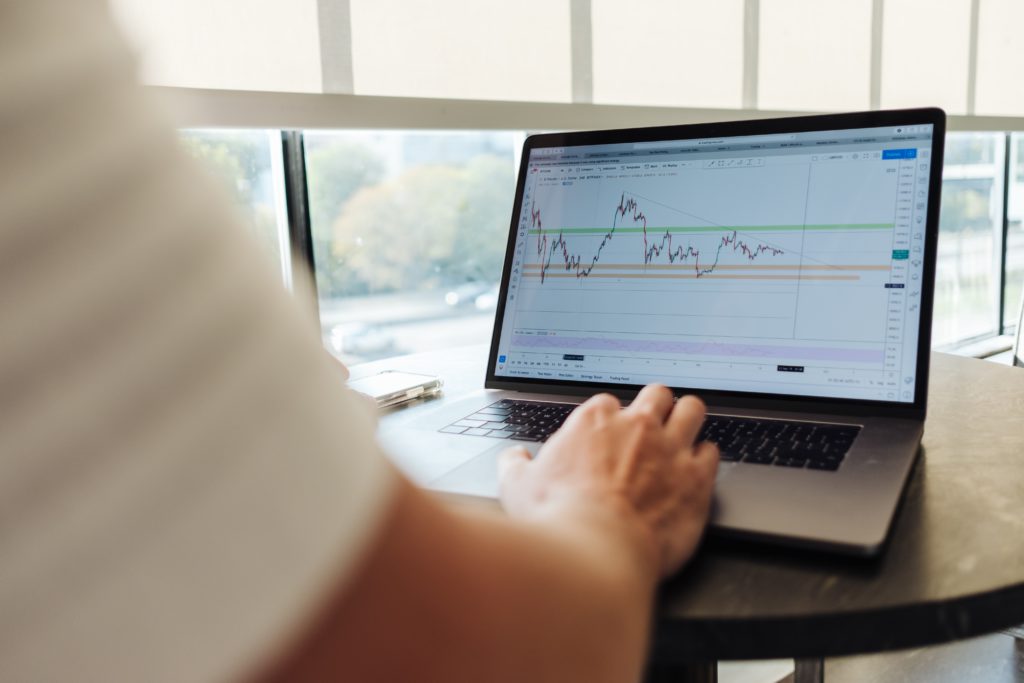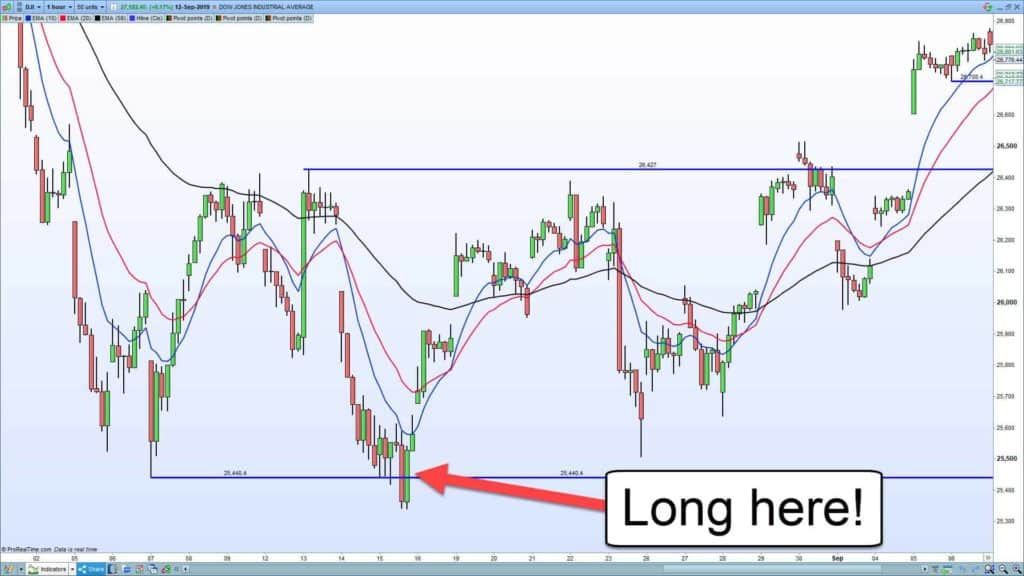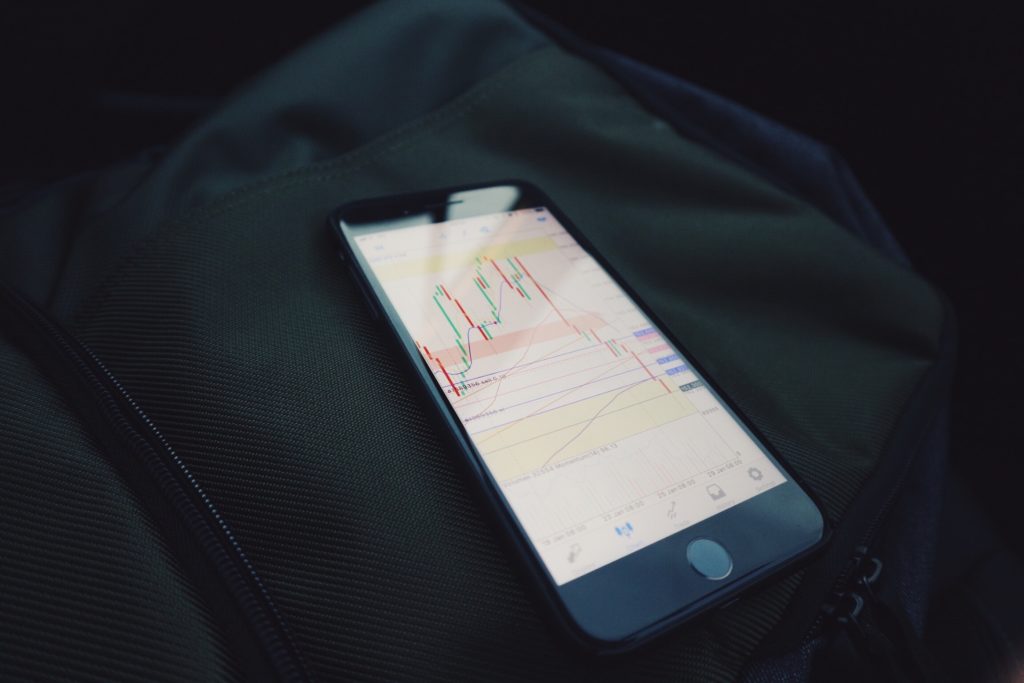Swing trading is becoming more prominent as an investment approach for retail traders. That is because, unlike day trading, it offers more flexibility while providing enough trading opportunities to generate consistent returns.
Our Forex Signals
1 - month
Subscription
 Up to 15 signals daily
Up to 15 signals daily 76% success rate
76% success rate Entry, take profit & stop loss
Entry, take profit & stop loss Amount to risk per trade
Amount to risk per trade Risk reward ratio
Risk reward ratiomonth
3 - month
Subscription
 Up to 15 signals daily
Up to 15 signals daily 76% success rate
76% success rate Entry, take profit & stop loss
Entry, take profit & stop loss Amount to risk per trade
Amount to risk per trade Risk reward ratio
Risk reward ratiomonth
 Most popular
Most popular
6 - month
Subscription
 Up to 15 signals daily
Up to 15 signals daily 76% success rate
76% success rate Entry, take profit & stop loss
Entry, take profit & stop loss Amount to risk per trade
Amount to risk per trade Risk reward ratio
Risk reward ratiomonth
Lifetime
Subscription
 Up to 15 signals daily
Up to 15 signals daily 76% success rate
76% success rate Entry, take profit & stop loss
Entry, take profit & stop loss Amount to risk per trade
Amount to risk per trade Risk reward ratio
Risk reward ratioSeparate Swing Trading Group
 Up to 3 signals weekly
Up to 3 signals weekly 76% success rate
76% success rate Entry, take profit & stop loss
Entry, take profit & stop loss Amount to risk per trade
Amount to risk per trade Risk reward ratio
Risk reward ratiomonth
1 - month
Subscription
 Up to 15 signals daily
Up to 15 signals daily 76% success rate
76% success rate Entry, take profit & stop loss
Entry, take profit & stop loss Amount to risk per trade
Amount to risk per trade Risk reward ratio
Risk reward ratiotime
At its core, swing trading is a strategy that sees trades kept open for longer than a day. The position might be kept open for a few days or even weeks. In rare cases, they might hold it open for as long as 2-3 months if the trade remains profitable. As such, the focus in swing trading is to take small gains in the short-term, but still longer than a day.
3
Payment methods
Trading platforms
Regulated by
Support
Min.Deposit
Leverage max
Currency Pairs
Classification
Mobile App
Min.Deposit
$100
Spread min.
Variables pips
Leverage max
100
Currency Pairs
40
Trading platforms
Funding Methods





Regulated by
FCA
What you can trade
Forex
Indices
Actions
Cryptocurrencies
Raw Materials
Average spread
EUR/GBP
-
EUR/USD
-
EUR/JPY
0.3
EUR/CHF
0.2
GBP/USD
0.0
GBP/JPY
0.1
GBP/CHF
0.3
USD/JPY
-
USD/CHF
0.2
CHF/JPY
0.3
Additional Fee
Continuous rate
Variables
Conversión
Variables pips
Regulation
Yes
FCA
No
CYSEC
No
ASIC
No
CFTC
No
NFA
No
BAFIN
No
CMA
No
SCB
No
DFSA
No
CBFSAI
No
BVIFSC
No
FSCA
No
FSA
No
FFAJ
No
ADGM
No
FRSA
71% of retail investor accounts lose money when trading CFDs with this provider.
Min.Deposit
$100
Spread min.
- pips
Leverage max
400
Currency Pairs
50
Trading platforms
Funding Methods




Regulated by
CYSECASICCBFSAIBVIFSCFSCAFSAFFAJADGMFRSA
What you can trade
Forex
Indices
Actions
Cryptocurrencies
Raw Materials
Etfs
Average spread
EUR/GBP
1
EUR/USD
0.9
EUR/JPY
1
EUR/CHF
1
GBP/USD
1
GBP/JPY
1
GBP/CHF
1
USD/JPY
-
USD/CHF
1
CHF/JPY
1
Additional Fee
Continuous rate
-
Conversión
- pips
Regulation
No
FCA
Yes
CYSEC
Yes
ASIC
No
CFTC
No
NFA
No
BAFIN
No
CMA
No
SCB
No
DFSA
Yes
CBFSAI
Yes
BVIFSC
Yes
FSCA
Yes
FSA
Yes
FFAJ
Yes
ADGM
Yes
FRSA
71% of retail investor accounts lose money when trading CFDs with this provider.
Min.Deposit
$50
Spread min.
- pips
Leverage max
500
Currency Pairs
40
Trading platforms
Funding Methods




What you can trade
Forex
Indices
Actions
Raw Materials
Average spread
EUR/GBP
-
EUR/USD
-
EUR/JPY
-
EUR/CHF
-
GBP/USD
-
GBP/JPY
-
GBP/CHF
-
USD/JPY
-
USD/CHF
-
CHF/JPY
-
Additional Fee
Continuous rate
-
Conversión
- pips
Regulation
No
FCA
No
CYSEC
No
ASIC
No
CFTC
No
NFA
No
BAFIN
No
CMA
No
SCB
No
DFSA
No
CBFSAI
No
BVIFSC
No
FSCA
No
FSA
No
FFAJ
No
ADGM
No
FRSA
71% of retail investor accounts lose money when trading CFDs with this provider.
The underlying idea is that many traders believe that changes in assets require several days or weeks to have a shift in price sufficient to make a reasonable profit. As such, one can say that many traders consider themselves as swing traders.
In this ultimate guide on swing trading, we show you everything there is know. By the end of reading our guide in full, you’ll be able to make an informed decision as to whether or not swing trading is right for you!
Eightcap - Regulated Platform With Tight Spreads

- Minimum deposit of just 250 USD to get lifetime access to all the VIP channels
- Use our Secure and Encrypted Infrastructure
- Spreads from 0.0 pips on Raw Accounts
- Trade on the Award-Winning MT4 & MT5 Platforms
- Multi-jurisdictional Regulation
- No Commission Trading on Standard Accounts

How Does Swing Trading Work?
Swing traders are looking to capture any “swings” or movements in the price of assets in the market. You want to lock in your profits before the next change happens, especially before the market reverses to null your gains.
Swing traders use tools such as technical analysis to find opportunities in swings. As you are looking for one small deviation, you can do such trading in trending or rough markets.

Advantages
- Swing trading demands relatively less time in comparison to day trading.
- You can seize critical changes in the asset prices.
- You can base your strategies on data from technical analysis.
Disadvantages
- Risk of losing your position if you hold out for longer durations.
- The market could reverse at any point leading to losses.
- You might miss out on trends that occur in more extended periods.
How to Approach Swing Trading
As mentioned earlier, a swing trader’s aim is to gather profits within a short timeframe. As opposed to long-term investments, you are aiming to bag modest gains. In some cases, you will only make a profit of 5% – 10%.
Such small profits might not appear as substantial rewards for a layman. However, when you consider the short period of time to gain this much profit, it will mount up to generous amounts with the right understanding of how the markets work.
On average, the duration of a swing trade is between 2 to 10 days. It is only rarely that it extends to weeks. In the stretch of these few days, you can make small wins to lead to overall big profits.
Difference Between Swing Trading and Day Trading
The main distinction between these two types of trading lies in the holding time of the trade. In day trading, you typically decide to close the trade on the same day you open it. Swing trading, on the other hand, involves maintaining the position open for at least a 24-hour period.
Swing traders can also check on their asset positions occasionally and make a move accordingly. Furthermore, you do not have to closely track the asset, as the position could be holding for days.
That is not the case with day trading. As day traders might keep a trade open for a matter of minutes. With that said, as a swing trader, there is always the inherent risk that things could change overnight for better or for worse.
Type of Assets for Swing Trading
The first big decision in swing trading is to choose the type of asset you want to trade. There are different financial markets and financial instruments available for swing traders. At a glance, one can enter the market of individual shares, currency, commodities, as well as cryptocurrencies.
Traders can choose a domain based on their personal interests or depending on how much capital they have to enter the trade.
On the bright side, there is a wide array of financial instruments to pick from – which we discuss in more detail below.
Stocks
Individual stocks are undoubtedly the most popular assets for swing trading. These are typically shares of individual companies. However, trading with these shares comes with the risk of a single event impacting the stock value.
For instance, if you have shares in the stocks of a prominent bank, a news development of a security breach could instantly tank the value of its shares. In effect, you are always vulnerable to such risk when trading with individual stocks. On the other hand, they can also gain value quickly following the launch of a new product.
Indices
Indices are shares of individual companies grouped together. Trading in indices will let you take advantage of the market fluctuation of not only one sector but also a wide range of companies. At the same time, similar to equities, a change in a single company could affect the entire index as well.
Exchange-Traded Funds
ETFs are considered a highly preferable choice of asset for swing trading. They represent a diverse array of assets and are available in several sectors.
A trader can pick an ETF of any investment category if they have knowledge of the particular asset. Trading ETFs works along the same lines of investing in individual stocks, except that you would be trading a group of diverse assets.
Currencies
Forex or foreign exchange is another dominant sphere for swing traders. While trading currencies, you are looking to see one currency increase or decrease in value relative to another. The forex market can be very volatile and is mainly traded by experienced swing traders.
Commodities
Commodity trading is usually attempted by professional swing traders. These are hard assets that are grouped into energy, metal, and agricultural products. Unlike other assets, commodity markets stay open and operate throughout the day, and trading is continuous. It thus comes with a high-risk factor for traders.
Cryptocurrencies
Trading in cryptocurrencies is becoming more and more popular among swing traders. In order to profit here, you not only need expertise in swing trading but also about the workings of cryptocurrencies. The volatility of cryptocurrencies is highly appealing for swing trading strategies.

Choosing the Right Asset
For a beginner, the abundant options available could be appealing and overwhelming at the same time. If you do not have any expert knowledge in particular assets, your first step is to identify which market to specialize in. It is not recommended to try trading more than one asset at a time, especially if you are new to the field.
Swing traders have a variety of resources available to make informed choices regarding their trade. Depending on the financial instrument you prefer, you can and should benefit from the tools available at your disposal. When you are starting out, your aim is to study the entanglements of one asset and how to speculate its movement.
As you make progress, you might want to attempt trading in other sectors as well. However, you will have a better idea of your trading preferences when you have more experience.
The Basics of Swing Trading
Swing trading works largely the same as any other investment arena. The main difference, as we have already covered, is in the time frame of the positions. Here are some points you need to know to get started in swing trading.
Going Long vs. Going Short
If you have read any articles related to trading, it is hard to miss these terminologies. At the core of trading, there are two positions. An investor can either go long or short.
- By going long, you buy an asset and hope for its value to go up before selling it.
- By going short, you assume that the price will go down, so you sell assets to buy them back at a lower price.
Seasoned investors can combine both these approaches to make the best of multiple assets.
Long Trading Example
- Let us say that you speculate on the market value of ABC shares going bullish.
- You invest in 100 shares of ABC at a market rate of $20.
- The total value of this trade is $2000.
- If the value of ABC shares goes up by 2.5%, you will be able to sell the shares for $20.5, which will give you an exit value of $2050.
Your profit of $50 is a result of going long on ABC. If you choose to go long, the profit potential could increase indefinitely. If the price of the asset did not increase as you expected, then you would be facing losses on the said trade.
For example, if the value of ABC shares were to drop to $19.5, then you would have been left with a loss of $50. Swing traders ideally want to sell the assets before such a decrease happens in the market.
Short Trading Example
- If the shares of ABC are looking bearish, then you place a sell order.
- You open a trade to sell 100 shares of ABC at $30 per share, at a total amount of $3000.
- The rate of ABC falls by 16.6% in a few days.
- This takes the share price of ABC to $25.
- You place a buy order and buy back the 100 shares at $2500.
- Your profit is $500.
How much you profit you make by going short depends on the amount the asset declines in the open marketplace.
Not every broker encourages investors to engage with short selling. If you want to benefit from a short selling strategy, your best bet is using a trading platform that offers CFDs.
Swing Trading with CFDs
When trading with CFDs or Contracts-for-Differences, you are essentially trading on margin. The concept is that you don’t own the underlying financial instrument (be it a commodity, stock, or forex). Instead, you trade with a an instrument that tracks the respective asset. As such, you get to determine whether you feel bullish (buy order) or bearish (bearish) regarding its prospects.
Crucially, trading through CFDs is a great way to go short while swing trading. As you do not buy or sell the physical assets, your profits will be amplified if you trade on margin.
Duration of Swing Trading
Swing trades are ideally meant to be short-term positions. However, within the short run, the duration could be anywhere between a few days to a few weeks. The fundamental strategy is to collect profits as the price increases (or decreases if shorting).
Some traders prefer to lock-in smaller gains, whereas others let the asset run to maximize their potential profits. However, the longer you hold out, you also risk other factors affecting the prices to bring you losses.
Swing Trading Strategies
Swing trading is one of the more sophisticated approaches to online trading. It might seem simple enough to sell the assets as soon as the price increases. However, the hard part is choosing the right financial instrument to invest in.
It takes time, commitment, and patience to teach yourself the art of swing trading. You will have to study the existing strategies as well as try to develop your unique approaches. There are also a number of risk management techniques available to mitigate your losses.

Traders also need to focus on avoiding the results of one trade to affect your next investment. This is where tools such as technical analysis come into play. These allow you to identify patterns and act on your assets accordingly. Many trading sites also give you access to these resources. We will discuss (in our view) the best online brokers to swing trade with later in this guide.
The Type of Orders in Swing Trading
Until now, we have covered the two most important order positions in any given trade- the buy order and the sell order. In traditional investing, these two order types might be sufficient as small changes in the market will not affect the trader’s longer-term profit targets. However, when it comes to short-term trading, it is simply not possible to leave an order open without an idea of when you are looking to achieve. In doing so, this would be referred to as reckless trading.
As such, every trader needs an exit plan, or else they may wait endlessly for profits to increase or for losses to minimize. This is particularly important, as swing traders will be handling multiple trades in a short period of time.
Stop-Loss Order to Limit Losses
As the name suggests, this order helps you limit your losses in a trade. It is the order you place to close your trade once the asset value reaches a specific price. For instance, you purchased the stock of ABC at $50 per share. After your buy order, the stock’s value starts diminishing.
In this case, you had already placed a stop-loss order at $48. This means, when the ABC shares started depreciating, your stocks would be sold when it reaches the $48-mark. Regardless of how far it plunged, you will only be taking the loss of $2 per share.
Usually, these stop-loss orders are placed at percentage ranges. You will set a stop-loss order if the asset loses its value by say, 2% or 3%, or the rate of your choosing.
There is a potential downside to this. Though stop-loss orders essentially act as an insurance policy, it is not always guaranteed that you will be able to maintain this. The market conditions might not allow for the sale to take place at this value. Instead, some brokers offer investors a ‘guaranteed’ stop-loss price. This will ensure that the broker will take care of your order regardless of the market. To benefit from this, investors will also be charged an extra fee.
Take-Profit Orders to Lock-In Profits
As ideal as it might seem to let your profits increase, open positions can go wrong in a matter of seconds. That is why experienced traders will look to lock-in their profits. The only difference here is that while a stop-loss attempts to tighten the loss margin, take-profit orders allow you to protect your gains. Investors often arrive at a take-profit price after performing technical analysis on the specific asset. It will give them an estimation of how long the ascend of the asset will hold out.

Automating Your Trades
Setting such orders is ultimately for the benefit of the investor. It will allow you to take a step back and access your options before you begin to trade. You will also get an idea of your potential losses and gains on each trade. Furthermore, setting these rates will stop investors from second-guessing their decisions.
Swing traders work with the backing of such information to place more than one trade. In some cases, your assets will not reach the set limits, either. If that happens, it is up to the trader to decide whether they want to close the trade or not. In swing trading, you can always wait a little further to wait for any further movements.
Leverage and Margin When Swing Trading
Swing traders need access to substantial capital in order to place multiple trades in over a short period of time. Here is where leverage comes into play.
Investors can depend on leverage instead of only using their own capital. For instance, let’s say a trader only has $500 in their account, and they need $5000 to process a trade. They can apply leverage of 10x to gain access to the capital they need.
Keep in mind that leverage amplifies not only your capital but also the profits and losses along with it. Leverages are available in multi-folds. Depending on the jurisdiction, there will also be limits to the amount of leverage that you can get. It will also depend on the type of assets you are trading with.
The risk of leverage lies in the fact that if you face losses, it will also be 10x as in the given example. For beginners, it is essential that you are fully aware of the risks of applying leverage before you set out to take advantage of access to extra capital.
Broker Fees and Commissions for Swing Trading
Swing trades happen through a trading platform. Today, the majority of these trades take place online as they offer ease and efficiency. Regardless of where you trade, there are a few standard fees that you will have to pay the broker.
The Spread
The spread is defined as the difference in trading positions of a single asset. In other words, it is the difference between how much you buy and sell an asset. Brokers impose a spread on every trade they execute, which brings them profits no matter which way the market moves.
A spread is generally easier to understand in percentage terms. Every trade you complete has to have a profit of at least the same as the spread. Until then, you will remain in the red.
Here is an example of how to calculate the spread
- Say you bought ABC shares at the buy price of $50.00.
- ABC shares are priced at a sell price of $50.50.
- The spread, in this case, is 1%.
- In order to make a profit in this trade, you need the price of ABC to rise at least by another 1% to make a profit after paying the spread.
Compared to day trading, swing trading is generally at an advantage when it comes to spreads. In the case of the former, target margins are relatively much smaller than in swing trading, so the spread will play a much greater impact on your capacity to make a profit. Nevertheless, you should still focus on swing trading sites that offer tighter spreads to take as much profit as you can.
Commissions
While the spread is somewhat of a mandatory fee across all trading sites, not every broker will charge you for commissions. If they do, it is a fee that you pay for each transaction you place at the broker.
The commission is also calculated in percentages, and the final amount will be based on the capital you trade with. You will have to pay commission for both sides of the trade, meaning there will be a buying commission and a selling commission.
Top 5 Swing Trading Platforms of 2022
Finding the right trading platform is equally important as learning to do trading itself. Beginners are often confused at the hundreds of choices available. That is why you need to follow a criterion, to check whether they are regulated and offer reasonable fees.
A reliable trading site should also provide you with all the necessary resources for you to base your decisions on. To make your job a bit easier, below we list (in our view) the five best swing trading sites of 2022.
1. AVATrade – 2 x $200 Welcome Bonuses
Using AvaTrade, you can invest in all of the financial instruments we have discussed in this guide. Its list includes stocks, forex, indices, crypto, commodities, and ETFs, as well as bonds and options. The platform has a long-standing reputation as a first-grade trading site. AVATrade is regulated across five continents by multiple reputable authorities.

- 20% welcome bonus of up to $10,000
- Minimum deposit $100
- Verify your account before the bonus is credited
2. VantageFX – Ultra-Low Spreads
VantageFX VFSC under Section 4 of the Financial Dealers Licensing Act that offers heaps of financial instruments. All in the form of CFDs - this covers shares, indices, and commodities.
Open and trade on a Vantage RAW ECN account to get some of the lowest spreads in the business. Trade on institutional-grade liquidity that is obtained directly from some of the top institutions in the world without any markup being added at our end. No longer the exclusive province of hedge funds, everyone now has access to this liquidity and tight spreads for as little as $0.
Some of the lowest spreads in the market may be found if you decide to open and trade on a Vantage RAW ECN account. Trade using institutional-grade liquidity that is sourced directly from some of the top institutions in the world with zero markup added. This level of liquidity and availability of thin spreads down to zero are no longer the exclusive purview of hedge funds.

- The Lowest Trading Costs
- Minimum deposit $50
- Leverage up to 500:1
Conclusion
Swing trading requires a great deal of practice to gain competence and consistency. There is no way to say how beneficial swing trading is when compared to other approaches. But, it is a type of strategy that might work well for some investors. It will also depend on your specific investment profile, available trading capital, and crucially – investment choices.
This guide has covered the fundamentals of swing trading. Before you begin, you need to further investigate what other strategies are available to you, as well as the technologies you need to use. Like all other trading approaches, you need to be prepared to accept both profits and losses along the way.
Eightcap - Regulated Platform With Tight Spreads

- Minimum deposit of just 250 USD to get lifetime access to all the VIP channels
- Use our Secure and Encrypted Infrastructure
- Spreads from 0.0 pips on Raw Accounts
- Trade on the Award-Winning MT4 & MT5 Platforms
- Multi-jurisdictional Regulation
- No Commission Trading on Standard Accounts

FAQs
What is the typical duration of a trade in swing trading?
How much can you profit through swing trading?
What is the spread in swing trading?
Who regulates swing trading?
What leverage is available for swing trading?
What kind of payment methods can be used to deposit and withdraw fund at swing trading sites?
Is it possible to keep a position open overnight?

